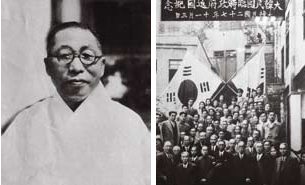Making traditional Korean handicrafts (MaeDeup/매듭) at the Indonesian Korean cultural center (KCC Indonesia)
On
Monday 7 June 2021 the Indonesian Korean Cultural Center held an event to make
traditional Korean handicrafts, namely (MaeDeup), this event was carried out
directly at the KCC with a strict health protocol security system, mandatory
washing hands, wearing masks and of course maintaining distance, in the process
Making Maedeup requires focused concentration, as well as thoroughness and
shrewd hand skills, in this event we are also given an explanation of the
history and meaning of each existing Maedeup.
The
Korean knot, also known as maedeup (매듭), is a traditional Korean handicraft
originating from the Three Kingdoms period that is closely related to the knot.
Korean knots develop into their own rich culture in terms of design, color, and
incorporation of local characteristics. The Korean knot uses a unique braiding
technique. The Korean knot comes from the ancient practice of using knots for
practical purposes; for example in fishing nets, agricultural tools, stone
knives and axes.
Traditionally,
the knot was used primarily to hold hunting tools at the waist and its use was
initially limited to the royal family, then spread to the common people. For
today, modern Korean artists use traditional knots in their works, such as
accessories, jewelry and home interior decorations.
The
history of making and using knots in Korea dates back to Prehistoric times When
it came to the Three Kingdoms period (Goguryeo, Baekje, Silla), maedeup entered
a new stage of aesthetic quality and was used for decorative purposes. The
proof can be seen from historical relics. Maedeup is used as an omamen that
decorates many important objects
For example: seals, royal portraits, swords, command baton & banners. In addition, it can also be found on traditional musical instruments, Buddhist art, Norigae, pockets/wallets, Gats, fans, decorations on home appliances.
There are 4 stages:
The process of dyeing
yarn with natural dyes
Making Dahoe (braided/braided
rope)
Tie a knot
Making tassel
Silk
thread dyeing process, The five basic colors of nature: red, blue, yellow,
black, and white, Dahoe (woven thread). This weaving process is called
dahoechinda, and there are 38 basic knots in traditional Korean maedeup, The
names of the knots are basically based on the objects found in the Maedeupjang
household.







Komentar
Posting Komentar